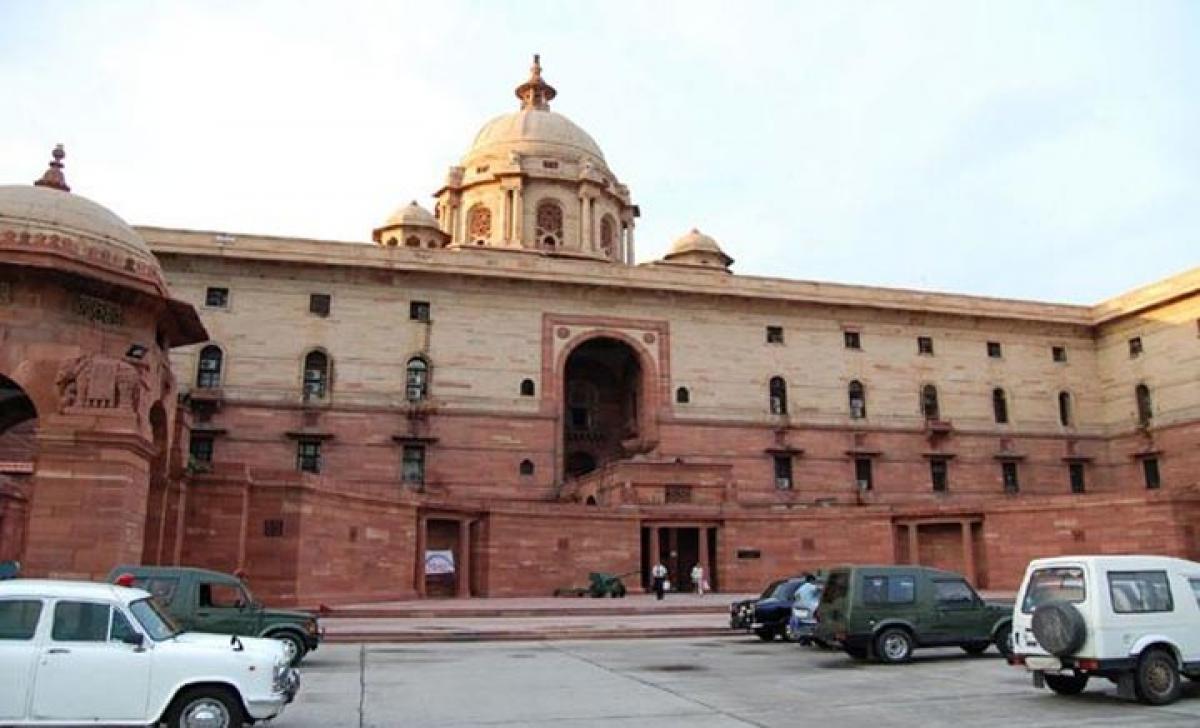Live
- NITI Aayog to focus on ‘Viksit Bharat @2047’
- PM playing petty politics: Oppn
- Jagan government destroyed AP economy says Chandrababu Naidu
- On Kargil Vijay Diwas, Modi hails Agnipath, targets Opposition
- War Of Words Over Kaleshwaram: Uttam accuses KTR of spreading lies
- MyVoice: Views of our readers 27th July 2024
- Trump will need a new attack plan for younger Kamala is
- Jagan claims innocence after ruining AP economy
- Kamala Harris to take the bull by the horns
- Myanmar floods displace 1,30,000; Magway region most affected
Just In

x
Highlights
A group of government-appointed advisors has recommended sweeping changes to India\'s outdated and overburdened bankruptcy system, aiming to modernise a process that takes several years and costs investors and taxpayers billions. The changes would be the most ambitious overhaul to date of rules governing the liquidation or revival of companies in India, a country with no single bankruptcy code and where competing laws, unclear jurisdictions and inadequate resources can leave cases languishing for decades.
A group of government-appointed advisors has recommended sweeping changes to India's outdated and overburdened bankruptcy system, aiming to modernise a process that takes several years and costs investors and taxpayers billions. The changes would be the most ambitious overhaul to date of rules governing the liquidation or revival of companies in India, a country with no single bankruptcy code and where competing laws, unclear jurisdictions and inadequate resources can leave cases languishing for decades.

The proposals, to be handed to the Finance Ministry as early as Monday, will impose deadlines for the first time and establish a network of insolvency professionals to lighten courts' workload and tackle delays, T.K. Viswanathan, chairman of the Bankruptcy Law Reform Committee, told Reuters. Under current rules, even deciding whether to save or liquidate an ailing company can take years, leaving it in the hands of managers who can - and do - strip assets with impunity. Under the proposed changes, a decision would have to be reached in 180 days - even 90 days for fast-track applications, Viswanathan said.
"The whole essence of our exercise is that everything is done within time," he said.
Foreign and domestic investors say the difficulty in exiting ventures can deter them from entering. Cases such as the protracted collapse of liquor tycoon Vijay Mallya's Kingfisher Airline empire have burnt investors. The airline was grounded in 2012 with some $1.5 billion in debt and its shares are now worthless, but creditor banks seized his former Mumbai headquarters only this year. The fate of his Goan villa is stuck in a prolonged court tussle.
India ranks 130 out of 189 in the World Bank's Ease of Doing Business report, below Lesotho and Cameroon, not least because of its poor performance in resolving insolvency. The World Bank says it takes 4.3 years on average, more than twice as long as in China, with an average recovery of 25.7 cents on the dollar, one of the worst among similar size economies.
"DEAD HORSES"
Troubled companies in India, or their creditors, largely turn to the Official Liquidator, a government-appointed officer attached to the country's high courts, who administers assets and oversees liquidation. Banks can also turn to separate Debts Recovery Tribunals (DRT), partly staffed by officials on assignment from the banks themselves and overseen by the Ministry of Finance.
Both are overstretched; on visits to their offices in India's financial capital, Mumbai, computers were often off and always outnumbered by teetering pillars of files. In the cramped Mumbai office of the DRT, a tribunal considered far speedier than the courts, a Ministry of Finance letter on the notice board urged officials to move faster, as cases were "in many cases taking more than four years". Inside, officials complained they had little power to draw a line under languishing cases.
"They are all dead horses," said one, gesturing to the day's case list. "They are never going to run any races, but you have to keep the dead stock." Chief among the problems is that for a single troubled company, creditors and owners can all initiate competing proceedings in different courts, tribunals and states.
Current legislation - especially the Sick Industrial Companies Act of 1985 - is geared towards reviving companies, so appeals frequently follow a wind-up order, resulting in virtual paralysis. "The Official Liquidator system is a disaster. It takes a minimum of five years and can take 10 years, by which point there is virtually no value left in the asset," said Bahram Vakil, partner with law firm AZB & Partners in Mumbai and a member of the reform committee. "There is a crying need (for change). That system has completely broken down."
Another committee member, M. R. Umarji, a consultant at the Indian Banks' Association and former central bank official, said staffing constraints meant it could take 15 to 20 years to wind up a company: "There are very limited numbers of persons available and there are hundreds, thousands of companies to be wound up." Proposed changes will scrap the Official Liquidator and introduce a system of registered insolvency practitioners, with a regulatory body, working under a company law tribunal. Practitioners, lawyers and drafters of the law hope it will professionalise the process, committee members said.
The changes, which would probably go to parliament next year, must first overcome a mindset that is geared to avoiding, not hastening, failure. They also need to provide the means to speed it up, through initiatives to take courts online and generate a corps of insolvency practitioners.
"The law can give the principles, but it requires enabling infrastructure for it to be implemented effectively," said Debanshu Mukherjee, of the Vidhi Centre for Legal Policy, a think-tank that advised the committee. "Even an efficient judge cannot work without a support system."

Next Story
More Stories
ADVERTISEMENT
© 2024 Hyderabad Media House Limited/The Hans India. All rights reserved. Powered by hocalwire.com







